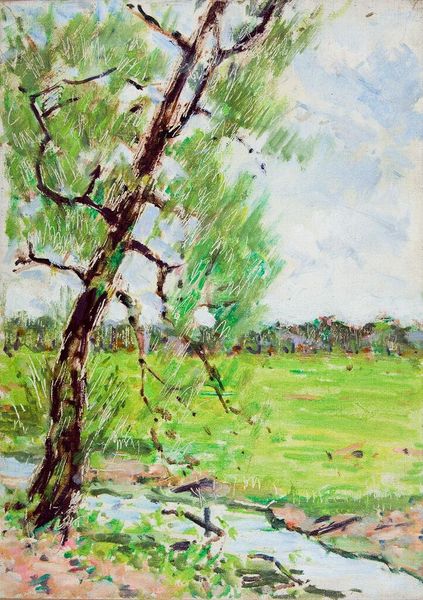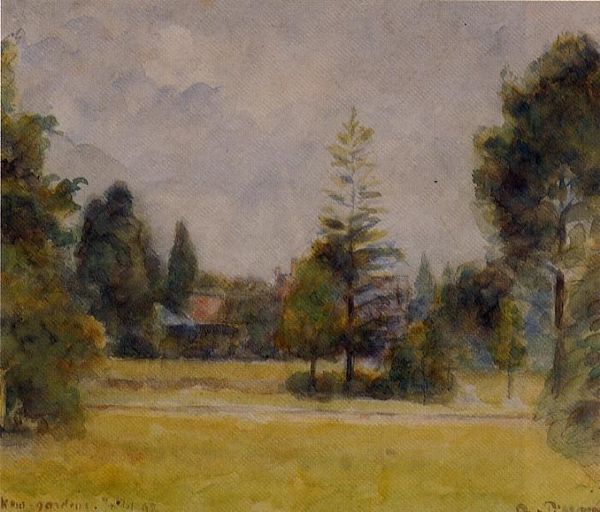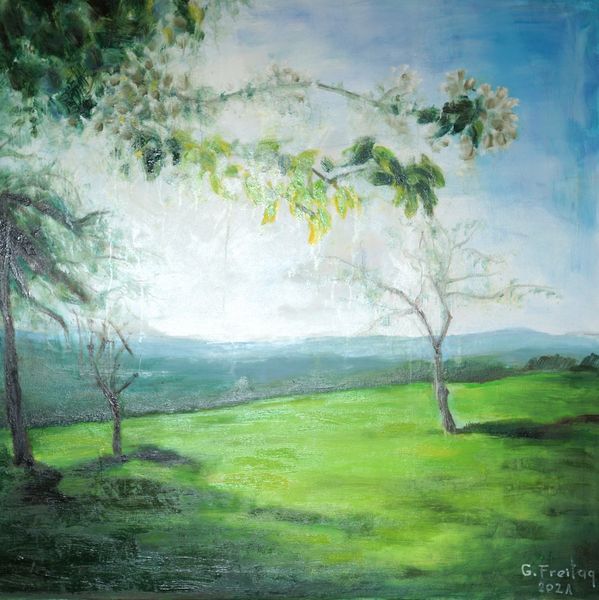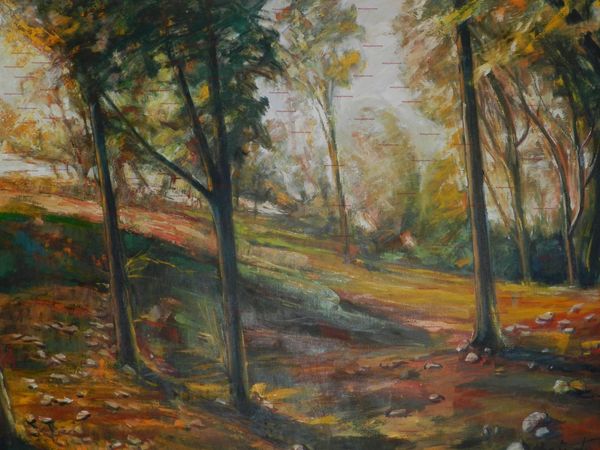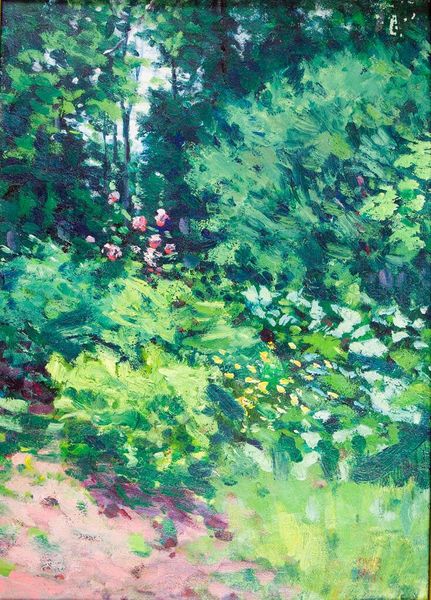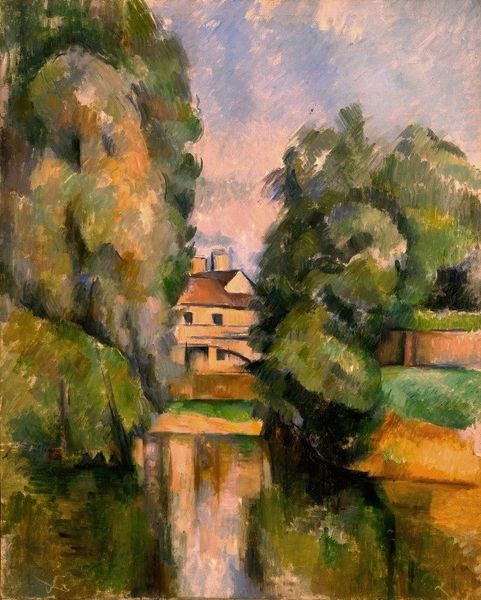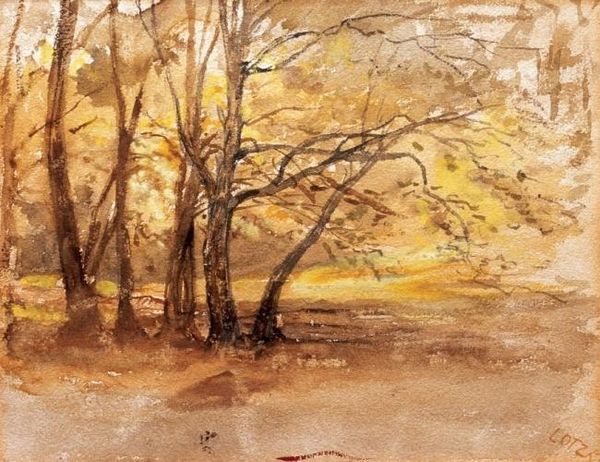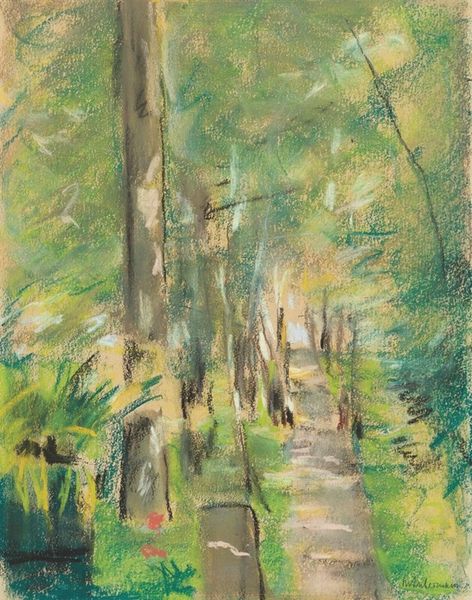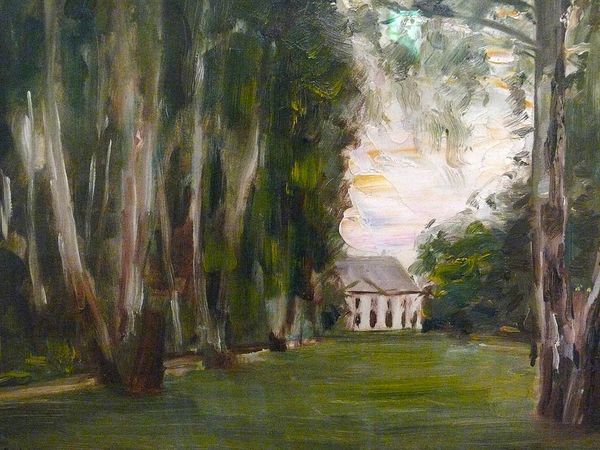
Copyright: Public domain
Curator: Let's turn our attention to "Kew Gardens, the Little Greenhouse" by Camille Pissarro, painted in 1892. A radiant watercolor that currently resides in a private collection. Editor: My immediate feeling is tranquility. It's almost a secret glimpse. Like peeking through the woods and catching a sun-drenched building in the distance. Curator: Precisely. Note how the framing vegetation not only situates us within nature, but also functions as a kind of curtain, partially obscuring, partially revealing. Green is dominant, which traditionally represents growth, harmony, and renewal, though one should keep in mind that depending on its use or cultural lens, green may denote something unsettling, too. Editor: Right. In this case though, definitely the harmony! It really does suggest an idyllic retreat. The feathery brushstrokes feel airy, like a gentle breeze moving through the trees. I find that especially intriguing, because the symbolism and the actual making complement each other: Pissarro created a landscape with air, light and nature’s touch as it really felt, in front of the subject. What an evocative and playful interpretation of the Impressionist tenet, of catching and portraying feelings on the go, instead of facts, like in realistic paintings. Curator: It echoes the philosophy of plein-air painting – capturing the fleeting moment and the emotive quality of natural light and atmospheric conditions. Pissarro frequently depicted scenes of rural and suburban life. Here, we might even find some utopian hints as Kew Garden was also seen as scientific project. Editor: The building itself is relatively obscured, which almost gives it a mythical feel; is it real or a dream? It makes me consider, in my own art, how to use absence to give the suggestion of a much deeper truth. Curator: A very poetic idea! To build upon it: absence and the fragment become suggestive when viewers themselves must bring meaning, memories, and dreams to fully realise the artistic expression. This piece invites reflection on the human relationship with nature, but not without a layer of obscurity. Pissarro created a kind of a riddle for the viewer to solve. Editor: This has been a truly beautiful moment for contemplation. I'll carry it in my mind’s eye for quite some time! Curator: Indeed, a reminder of the layered connections between nature, culture, and human experience.
Comments
No comments
Be the first to comment and join the conversation on the ultimate creative platform.

